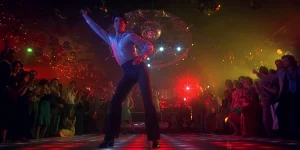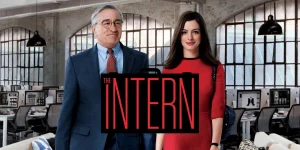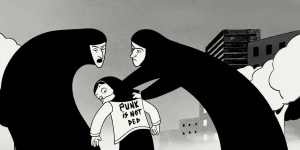Phenomenon (1996), directed by Jon Turteltaub, is a heartfelt science-fiction drama that explores human potential, transformation, and the delicate relationship between intellect, love, and mortality. Starring John Travolta in one of his most emotionally resonant roles, the film blends small-town charm with speculative science and deep philosophical questions.
Table of Contents
ToggleDetailed Summary
The Spark That Starts It All
The story takes place in a quiet Northern California town where George Malley (John Travolta), a friendly, well-liked auto mechanic, lives a simple life. On the night of his 37th birthday, while celebrating with friends outside a bar, George is struck by a bright light in the sky. He collapses, seemingly unconscious for a few moments, and then regains consciousness—changed.
From that moment on, George begins to exhibit strange and extraordinary mental abilities. He reads voraciously, learns foreign languages in hours, and solves complex mathematical problems. He begins to demonstrate telekinesis, moving objects with his mind. His brain is evolving rapidly, and no one—scientists or doctors—can fully explain it.
Love and Alienation
As George’s powers grow, so does the fear and suspicion of the townspeople. His friends and neighbors begin to distance themselves, unsure whether he’s blessed, cursed, or dangerous. Even the local doctor (Robert Duvall) and his longtime friend Nate (Forest Whitaker) struggle to comprehend what’s happening.
Meanwhile, George falls in love with Lace (Kyra Sedgwick), a local woman who makes handcrafted chairs. Their romance is cautious and gradual, but his powers and the attention they bring begin to interfere with their growing connection.
Scientific Interest and Government Intrusion
News of George’s abilities spreads beyond the town. The military and intelligence agencies take notice, believing George may be a threat—or at least a scientific curiosity. He’s taken in for tests, analyzed, and questioned, but even their most advanced tools can’t fully measure or replicate his abilities.
George’s intelligence continues to soar, but he also starts experiencing seizures and strange episodes. Something is clearly wrong.
The Real Cause of George’s Powers
Eventually, George undergoes a brain scan. The shocking revelation: George has a massive, rare brain tumor, specifically astrocytoma multiforme. His extraordinary intelligence and abilities are the byproduct of this tumor pressing against previously unused parts of his brain, not some cosmic or divine event.
It’s not a miracle—it’s a death sentence.
This turning point strips away the sci-fi mystery and reframes the story into something even more human and emotional. George is not evolving into a new species or the next stage of humanity. He’s dying.
Movie Ending
As George’s health declines, he chooses to spend his remaining time with Lace and her children, who have come to accept and love him. The townspeople, having realized the truth about his condition and the unfairness of their rejection, begin to come back around. The doctor, once skeptical, becomes deeply supportive.
In his final days, George imparts his knowledge and leaves behind ideas for agricultural innovations that could benefit the community. He wants his life, brief as it now seems, to matter.
George dies peacefully, surrounded by those he loves. At his funeral, the town comes together, healing the rift his transformation had caused. In the final scene, Lace is seen running her shop, with George’s favorite tomatoes growing outside—evidence that his teachings, and his love, continue to have an impact.
There is no dramatic explosion or metaphysical twist at the end—just a tender, emotional conclusion about the fragility of life and the impact one person can make in a short time.
Are There Post-Credits Scenes?
No, Phenomenon does not feature a post-credits scene. The movie ends on a quiet, emotional note that doesn’t need additional closure or sequel setup.
Type of Movie
Phenomenon is a blend of drama, romance, and science fiction. While it has speculative elements, the film is deeply rooted in human emotion and philosophical introspection. It asks what it means to live well, love deeply, and use one’s potential for good.
Cast
- John Travolta as George Malley
- Kyra Sedgwick as Lace Pennamin
- Forest Whitaker as Nate Pope
- Robert Duvall as Doc Brunder
- Jeffrey DeMunn as Prof. John Ringold
- Richard Kiley as Dr. Wellin
- Brent Spiner as Dr. Bob Niedorf
Film Music and Composer
The score was composed by Thomas Newman, known for his emotionally resonant and understated compositions (The Shawshank Redemption, American Beauty). The soundtrack also includes Eric Clapton’s iconic song “Change the World”, which became a major hit and won several awards, including a Grammy.
Filming Locations
The film was primarily shot in Northern California, especially in towns like Auburn and Sonora, which provide the perfect backdrop for the movie’s small-town charm. These locations emphasize the close-knit community dynamics and the grounded setting that contrasts with the extraordinary events.
Awards and Nominations
- Eric Clapton’s “Change the World” won three Grammy Awards, including:
- Record of the Year
- Song of the Year
- Best Male Pop Vocal Performance
- The film received a Saturn Award nomination for Best Fantasy Film.
Although the movie wasn’t a major awards contender, it achieved commercial success and left a lasting emotional impact on audiences.
Behind the Scenes Insights
- John Travolta reportedly studied neurological behavior to better understand George’s transformation.
- Director Jon Turteltaub aimed to keep the film grounded, despite its sci-fi premise, focusing on emotional authenticity.
- Kyra Sedgwick and Travolta improvised several of their romantic scenes to keep them feeling natural.
- The light flash scene was achieved using practical lighting effects, not CGI.
Inspirations and References
While not directly based on a book, the film was inspired by philosophical questions about human potential and the untapped capacity of the brain. It echoes themes from earlier speculative fiction like Flowers for Algernon and shares similarities with Awakenings.
Alternate Endings and Deleted Scenes
There were no widely reported alternate endings, but some deleted scenes explored more of George’s earlier experiments with his abilities—such as him attempting to fly a plane using mental calculations. These were trimmed for pacing and tone.
Book Adaptations and Differences
No direct book adaptation exists, but a novelization of the movie was released. The book version expands slightly on George’s inner thoughts and his evolving perspective on life, but the plot follows the film closely.
Memorable Scenes and Quotes
Key Scenes
- George seeing the light and collapsing—a pivotal moment that sets everything into motion.
- George solving complex equations and learning Portuguese in a day.
- His speech in the classroom about how everything in nature is connected.
- The hospital scene where George discovers the truth about his tumor.
- The intimate dinner scene where Lace finally opens up to George.
Iconic Quotes
- “I’m not a freak, Lace. I’m just—awake.”
- “Everything is on its way to somewhere.”
- “This is not about brain power… this is about heart power.”
- “The light… it wasn’t a dream.”
Easter Eggs and Hidden Details
- George’s reading list includes books on physics, language, and metaphysics, hinting at the movie’s core themes.
- The tomatoes George grows are symbolic of growth, care, and legacy—they appear again at the very end.
- The light in the sky is never explained, reinforcing the film’s focus on internal transformation over external sci-fi spectacle.
Trivia
- The movie was a surprise summer hit in 1996, earning over $150 million worldwide.
- John Travolta’s role was seen as a career pivot—showcasing his range beyond action and musical roles.
- The title Phenomenon refers not just to George’s powers, but to the ripple effect one person can have on many lives.
Why Watch?
If you’re looking for a film that combines emotional depth, romantic tension, and intellectual curiosity, Phenomenon is an underrated gem. It’s a story about living fully, loving openly, and leaving something meaningful behind. It’s not just about what the brain can do—it’s about what the heart can feel.
Director’s Other Movies
- While You Were Sleeping (1995)
- National Treasure (2004)
- Cool Runnings (1993)
- The Kid (2000)
- The Sorcerer’s Apprentice (2010)
Recommended Films for Fans
- Awakenings (1990)
- Powder (1995)
- K-PAX (2001)
- The Green Mile (1999)
- A Beautiful Mind (2001)
- The Man Without a Face (1993)






















